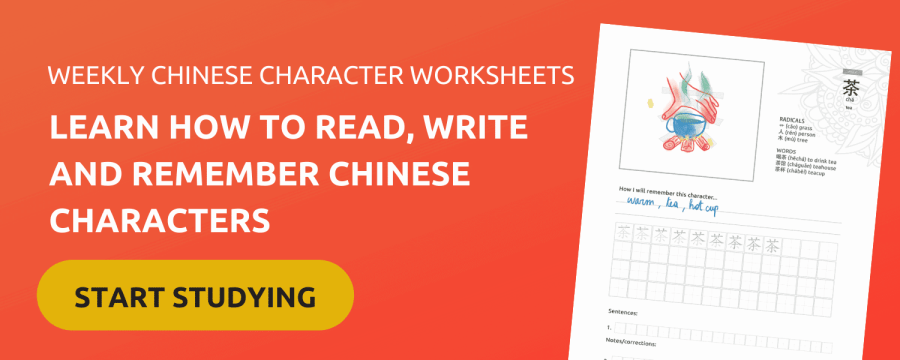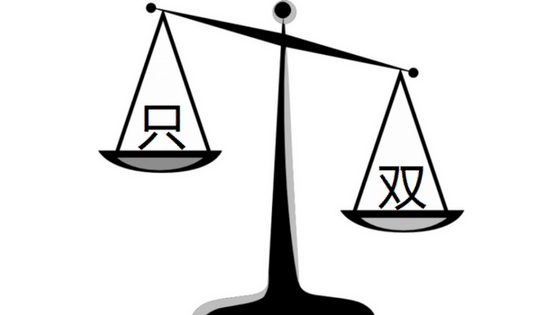There’s been one area of my Chinese studying that I’ve found pretty confusing, at times quite annoying, but inevitably (once the penny dropped) rather interesting. For me, Chinese measure words became an added challenge when learning an already intriguing language. But it has to be said, they are an essential part of learning Mandarin.
As always, I had questions, confrontation and somewhat reluctant acceptance until I realized it was never that bad to begin with (you may have noticed a theme in my writing).
Luckily, like many aspects of Chinese, there are rules! This makes it much easier to remember which measure word to use when referring to a noun, although I had to admit there are some amusingly tricky ones (see the measure word for ‘shark’ below).
Why do I need to measure anything?
Firstly, what do we have to ‘measure’ in Chinese? A measure word or classifier is used before a noun to indicate which ‘class’ a noun belongs to.
So, I have a/an = 一个 (yī gè).
Simple.
Well no, not quite.
There are also measure word for flat things, skinny things, small animals, big animals, and to confuse things a little more, horses have their OWN measure word…
If measure words are getting a little heavy for you, here’s my whistle-stop guide to Chinese measure words to help you lose some worry weight and be on your merry way!
Size, Length and Shape Measure Words
Let’s first take a look at measure words that are used with objects based on shape:
张 (zhāng) is the classifier for flat sheets such as paper 纸.
‘一张’纸巾 (yì zhāng zhǐ jīn) is ‘a piece’ (or sheet) of tissue paper.
However, if you want a whole pack of tissues you need to say ‘一包’ 纸巾 (yì bāo zhǐ jīn) ‘a packet’ of tissues.
张 (zhāng) does not extend to books, which have their own classifier, 本 (běn). For example, ‘一本’ 书 means ‘a’ book.
本 (běn) is also used for files and periodicals. There’s a cool connection between books and 本 (běn) because its meaning is ‘root’ (root, tree, paper, book, get it?).
In the past, I’ve gotten rather irritable over 张 (zhāng), because although it’s a measure word for flat objects, if it’s long and flat (oh er!), apparently the ‘long’ classifier is given preference (yes, the pun continued).
Long and narrow things are given the classifier 条 (tiáo).
For example, ‘一条’ 领带 (yī tiáo lǐng dài) is ‘a tie’. Amusingly enough, sharks and fish are also measured using 条 (tiáo) as in ‘一条’ 鲨鱼 (yī tiáo shā yú) ‘a’ shark, although personally, I’m glad I’m not the one measuring sharks.

条 (tiáo) also means ‘strip’ or ‘item’, as in 面条 (miàn tiáo) meaning noodles ‘flour strips’.
Animal Measure Words
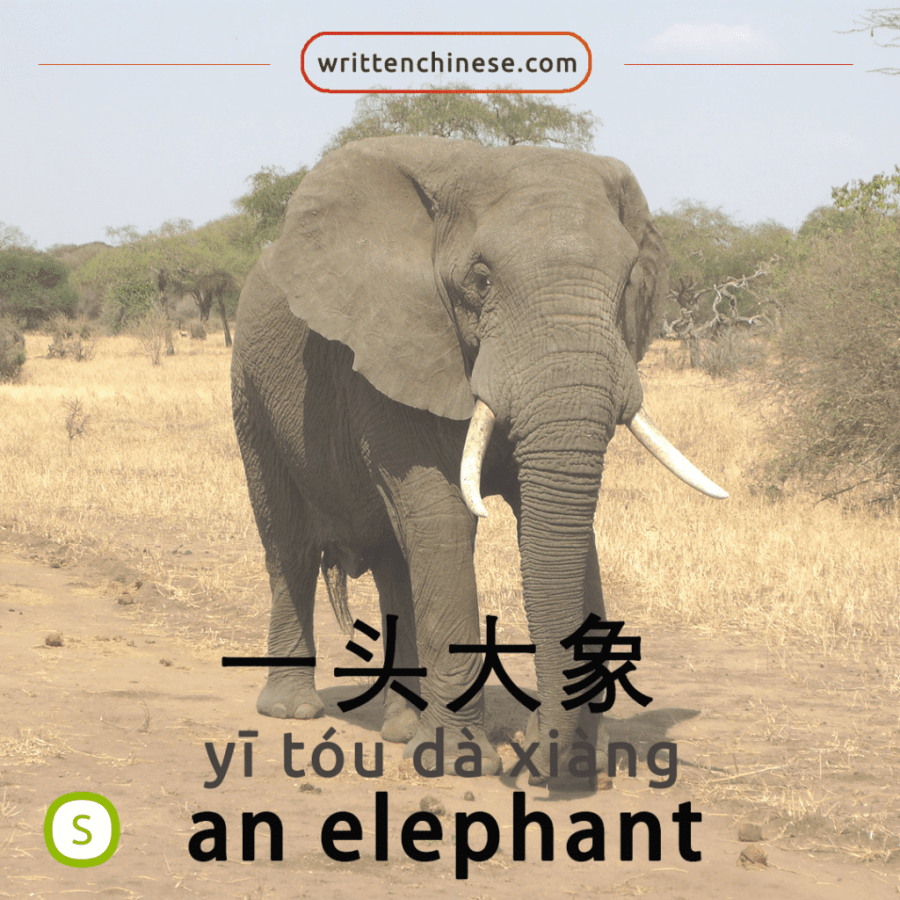
Big animals such as ‘an’ elephant 一头大象 (yī tóu dà xiàng), ‘a’ cow 一头牛 (yī tóu niú) and ‘a’ giraffe 一头长颈鹿 (yī tóu cháng jǐng lù) are measured using the character 头 (tóu).
But small animals and birds are measured using 只 (zhī). For example, ‘一只’ 龟 (yì zhī guī) is ‘a’ turtle and ‘一只’ 企鹅 (yì zhī qǐ é) is ‘a’ penguin.
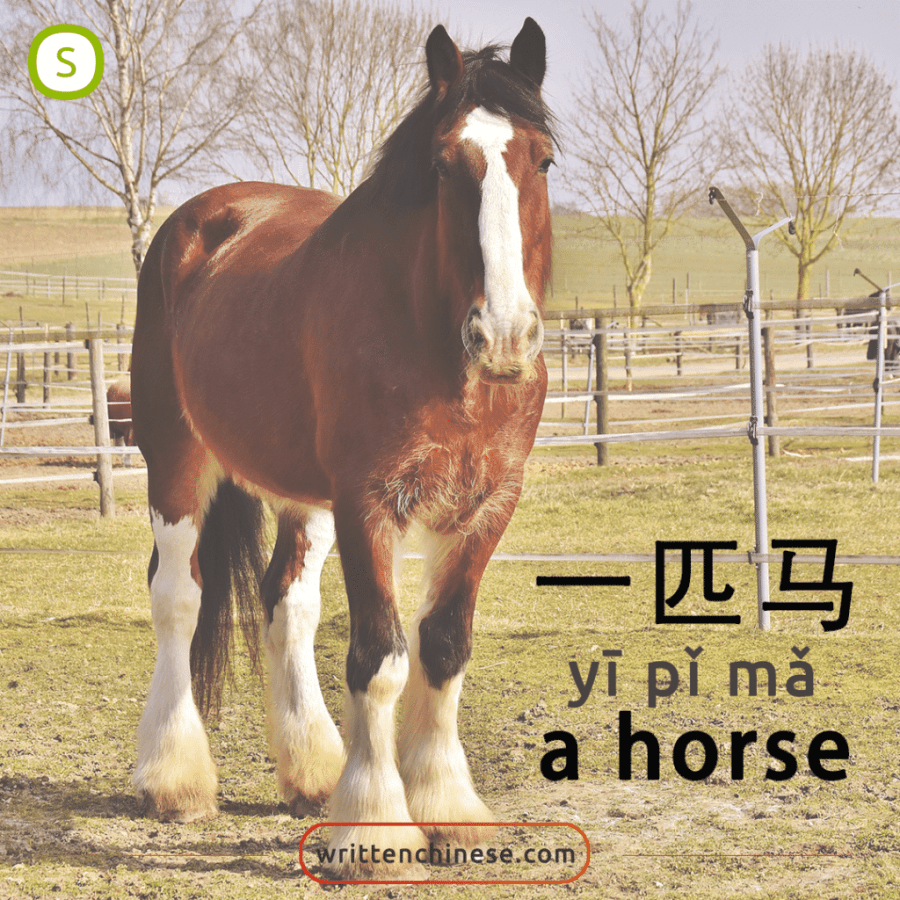
Horses and other horsey looking animal such as mules, randomly have their own measure word 匹 (pǐ). History suggests the measure word was meant to reflect the relationship between the horse and man.
Quantity Measure Words
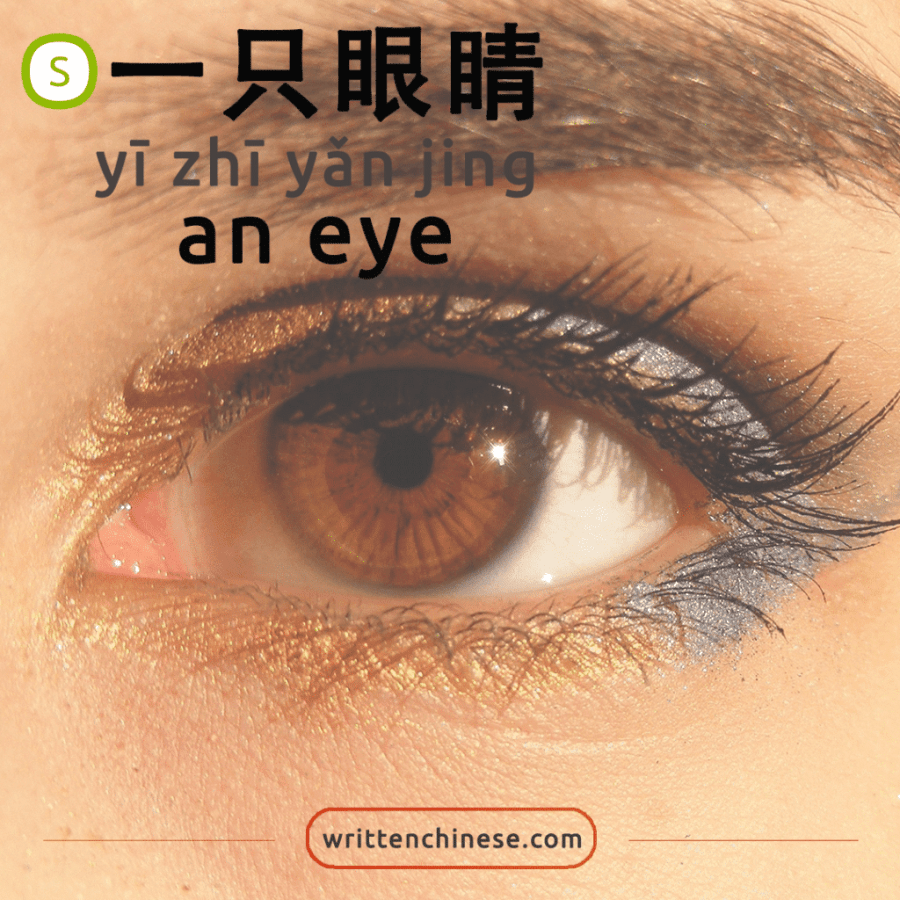
只 (zhī) is also used to indicate something is ‘1 of a pair’.
Clumsy people can use ‘一只’ 筷子 (yì zhī kuài zi) for 1 chopstick, pirates can say ‘一只’ 眼睛 (yì zhī yǎn jing) for ‘1 eye’.
When talking about a pair of something we use the measure word 双 (shuāng). ‘A pair’ of hands are ‘双’ 手 (shuāng shǒu), but unlike in English, you DO NOT say ‘双’ 裤子 (shuāng kù zi) for a pair of trousers or pants, depending on whose side you’re on.
Clothes Measure Words
Go back to 条 (tiáo), the measurer of all things long and narrow for ‘一条’ 裤子 (yī tiáo kù zi) which, unless you enjoy wearing bell bottom-ed flairs, works well enough.
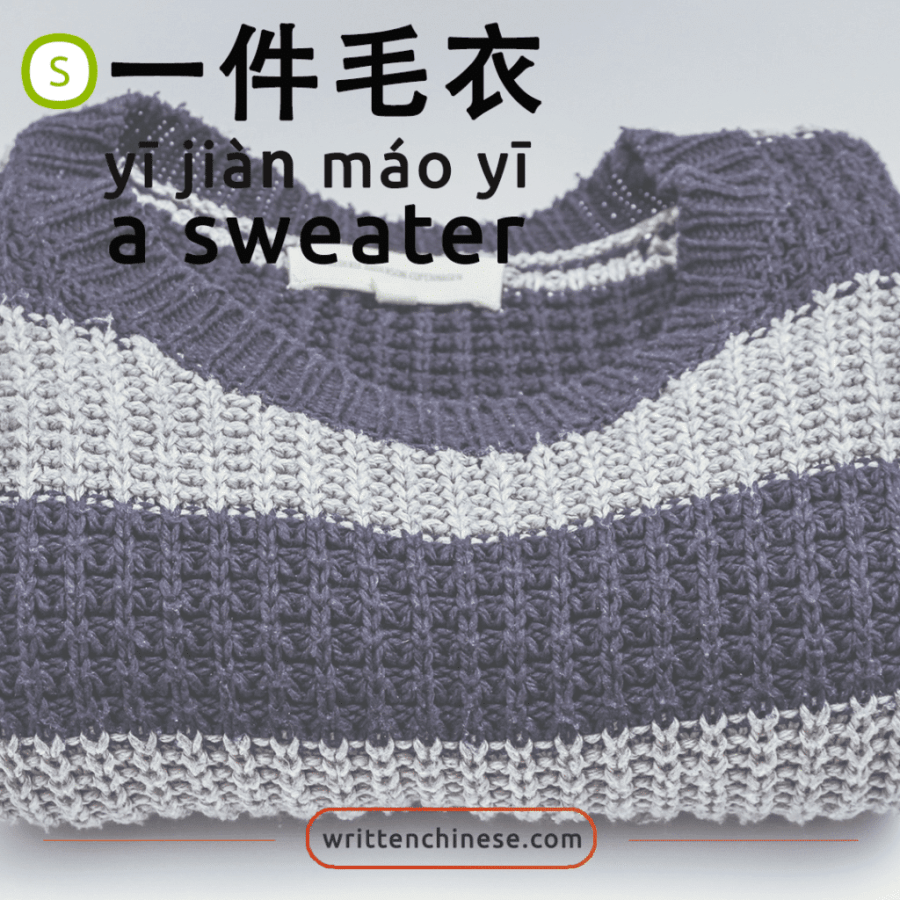
件 (jiàn) is the measure word for clothes that are not straight and narrow and don’t come in twos. All you’re left with is sweater ‘一件’ 毛衣 (yī jiàn máo yī), swimsuit ‘一件’ 泳衣 (yī jiàn yǒng yī), and shirt ‘一件’ 衬衫 (yī jiàn chèn shān).
Buildings and Place Measure Words
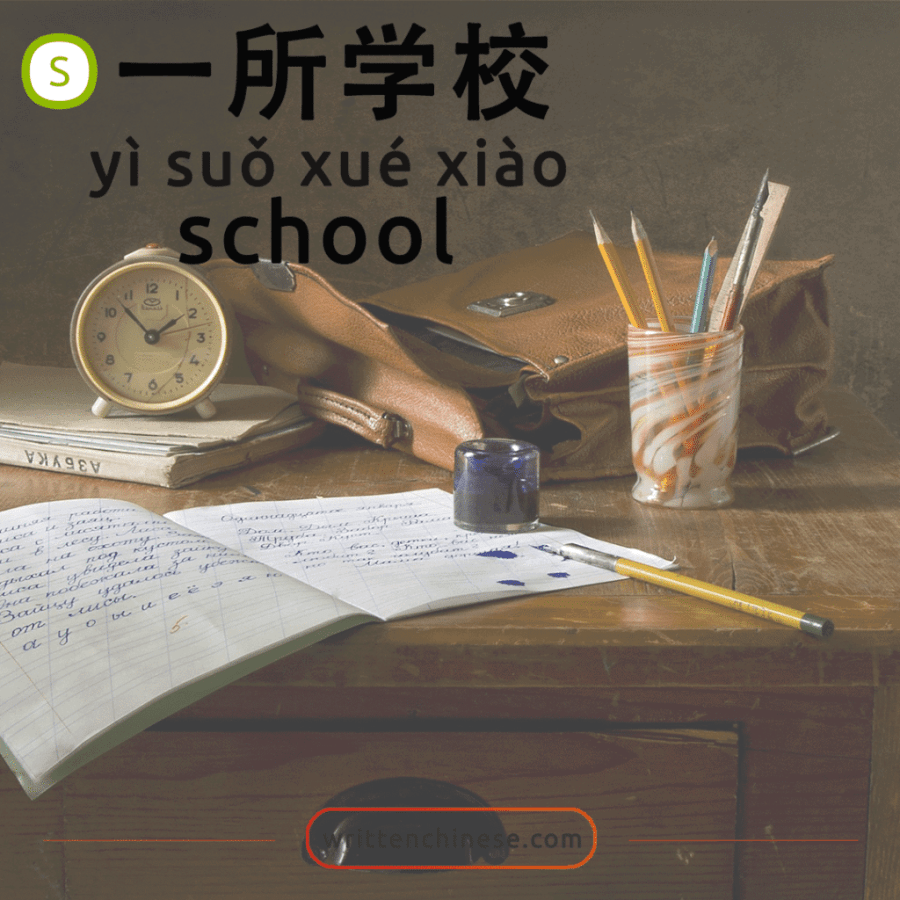
所 (suǒ) is used for institutions for example, ‘一所’ 医院 (yì suǒ yī yuàn) ‘a’ hospital and ‘一所’ 学校 (yì suǒ xué xiào) is ‘a’ school.

However, 家 (jiā) is the measure word used when talking about businesses and homes. For example, ‘一家’ 酒店 (yì jiā jiǔ diàn) for ‘a’ hotel and ‘一家’ 餐馆 (yì jiā cān guǎn) is ‘a’ restaurant.
Food and Drink Measure Words
When you’re in the restaurant, you can use the measure word 份 (fèn) for a ‘batch’ of something such as 一份饺子 (yī fèn jiǎo zi) for ‘some’ dumplings.
An essential measure word to know is 瓶 (píng) for when buying a bottle of wine 一瓶红葡萄酒 (yī píng hóng pú tao jiǔ) or ordering beers 五瓶啤酒 (wǔ píng pí jiǔ).
If you’re visiting 星巴克 (xīng bā kè) Starbucks and want a skinny vanilla latte with no cream you can use the measure word 杯 (bēi). This character is also the noun ‘cup’, 杯子 (bēi zi).
Time Measure Words
The last example is 次 (cì) used to indicate ‘time’.
下次 (xià cì) means ‘next’ time, 上次 (shàng cì) is ‘last’ time. You can combine 次 (cì) with many different verbs just as in English. 每次 (měi cì) ‘every’ time and 这次 (zhè cì) ‘this’ time or now.
Finding Measure Words
Measure words are not the most difficult thing to learn and although there are rules, there are often exceptions that you need to be aware of. Otherwise, they’re gonna stick a foot out and trip you up.
When you search for nouns in the Online Dictionary, you will now see a section on the right-hand side with all the measure words for that noun!
